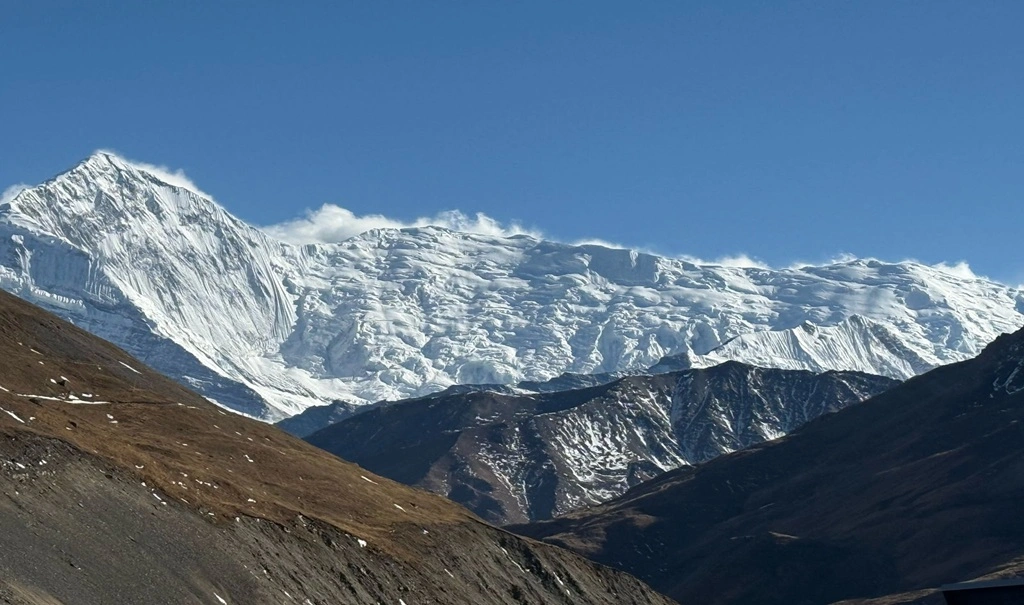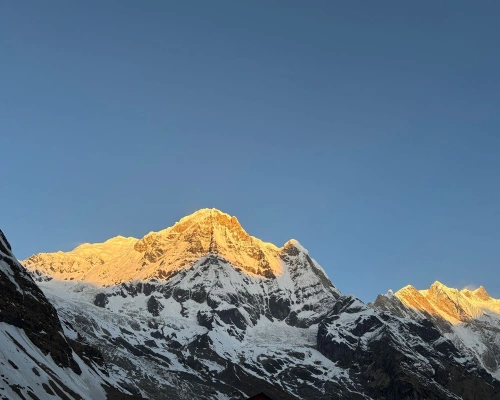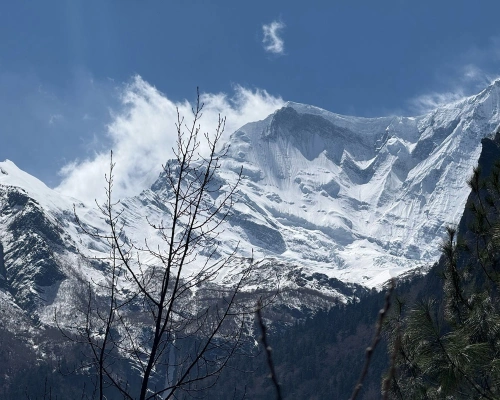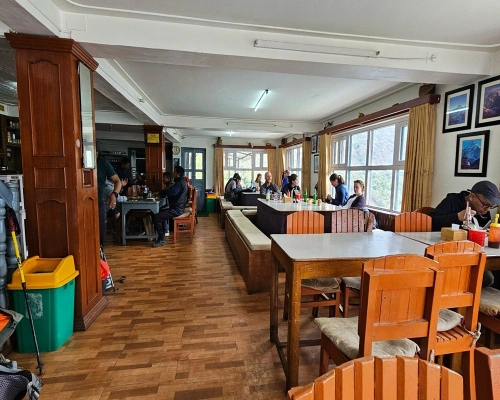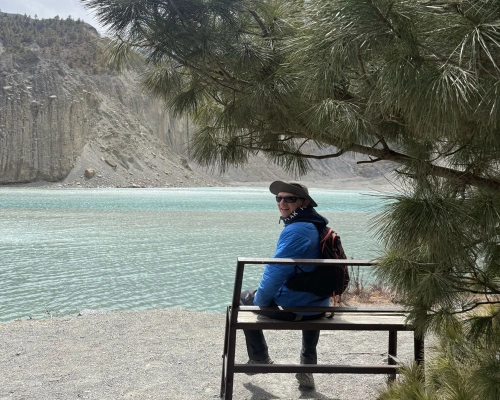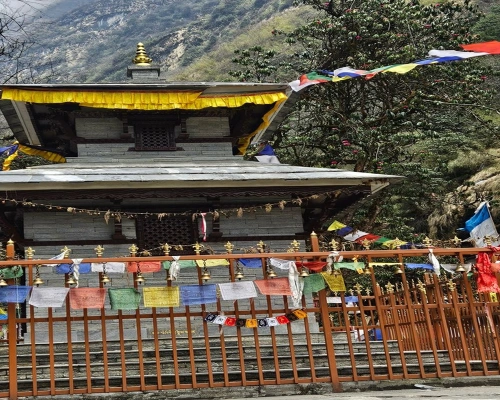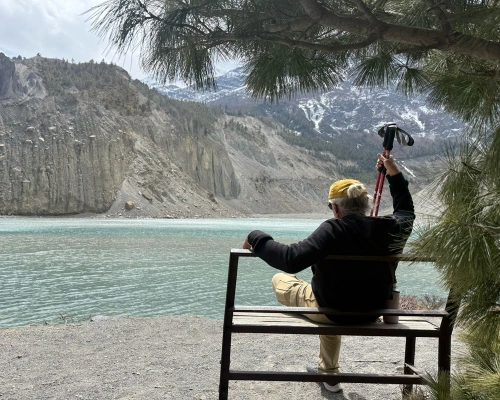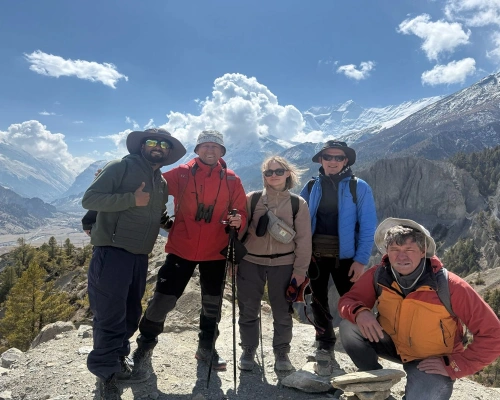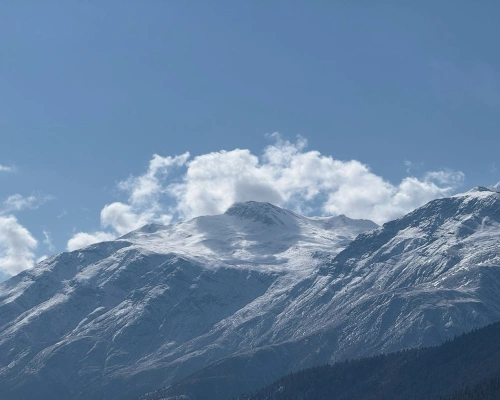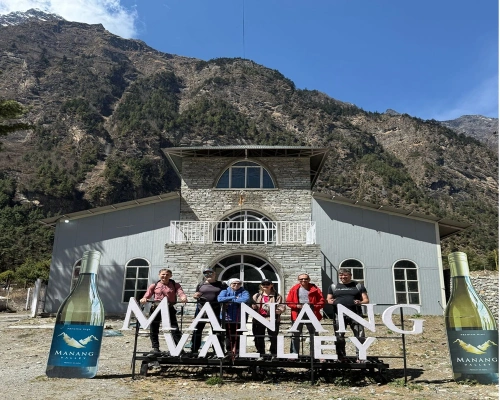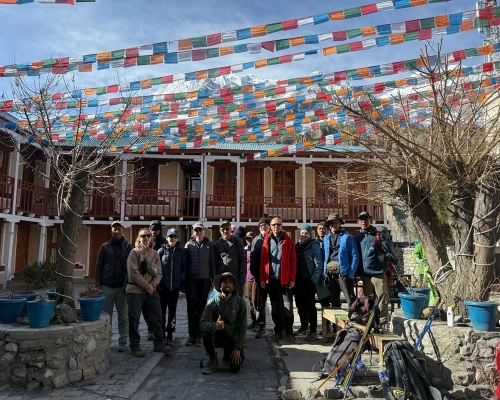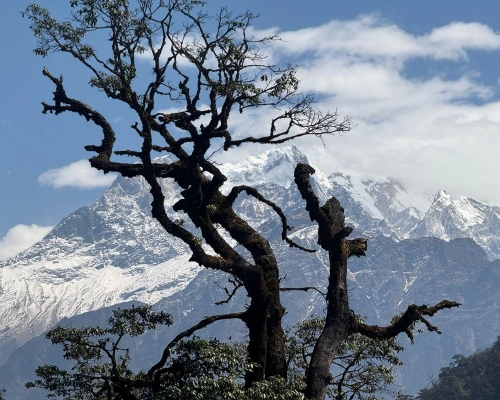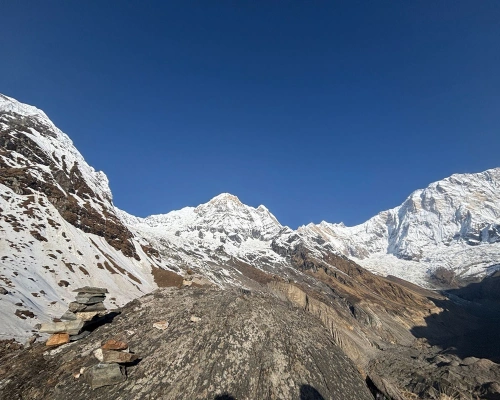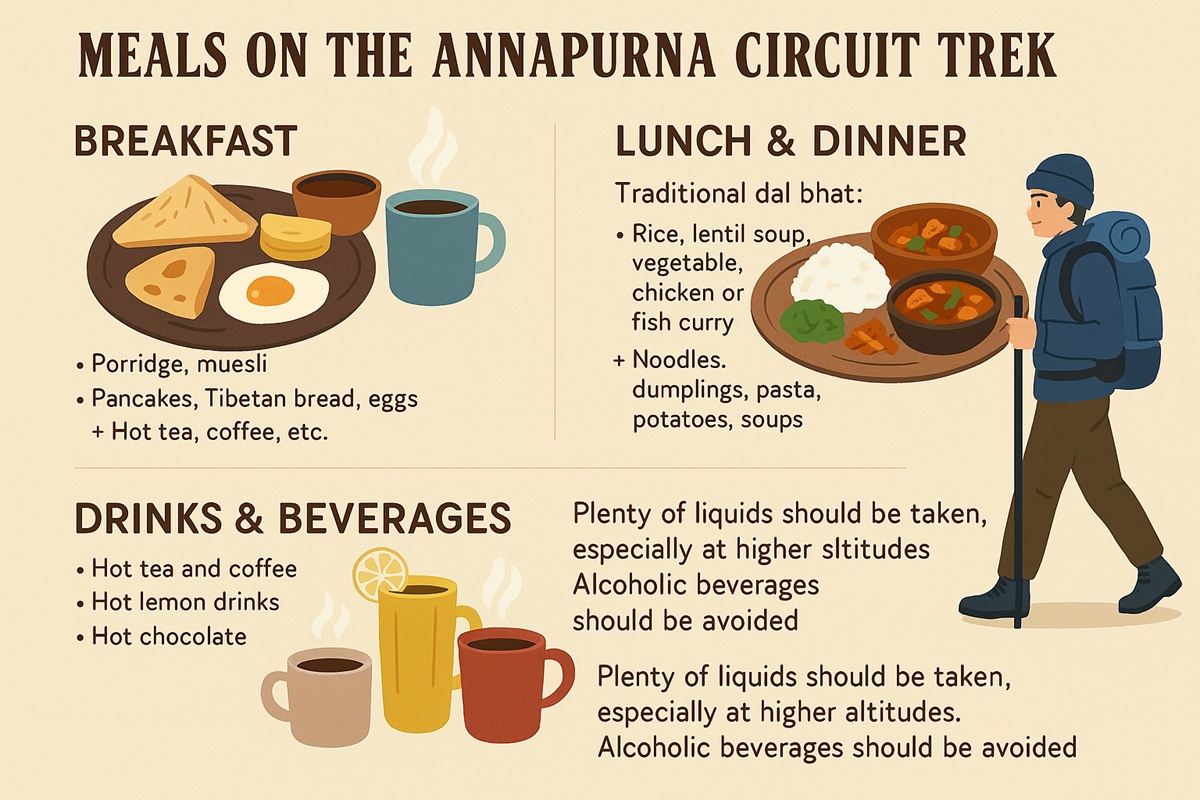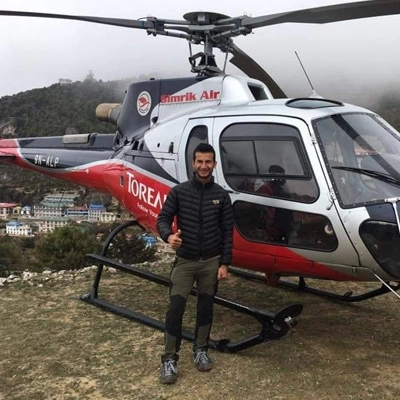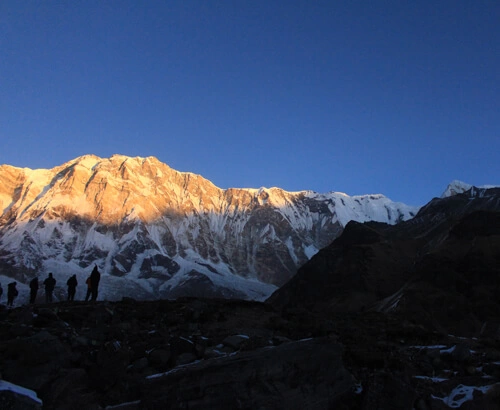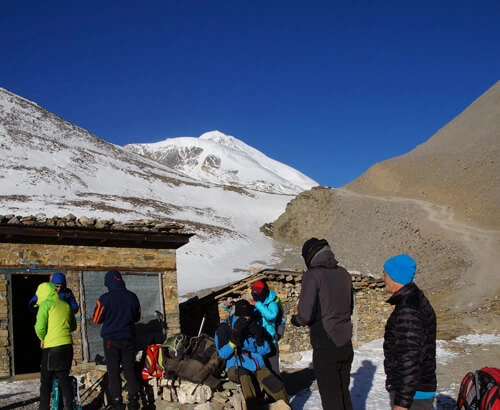About Annapurna Circuit Trek 13 Days
The Annapurna Circuit Trek is probably one of the most iconic and diversified treks in the world, promising incomparable adventure in dramatic sceneries. This is an outstanding mountain scenery trek, offering exciting cultural exploration and diversified terrain to walk upon-a well-nigh-perfect combination that Nature and any serious trekker may ever think about. The 13-day-long Annapurna Circuit Tour moves through luscious valleys, high mountain passes, classical villages, and barren landscapes, thus including almost everything from the Himalayas into a complete Himalayan trek.
Annapurna Circuit Himalayas 13 Days program designed in a manner to maximize the challenge-reward factor in this 13-day trek program, climbing steadily from subtropical lowland to alpine high-country landscape, with the peak at 5,416-meter-altitude Thorong La Pass-one of the highest trekking passes in the world. All the way, the breathtaking panoramas of some of the world's highest peaks-views of Annapurna I, Dhaulagiri, Machhapuchhre, and Manaslu are there to keep in sight.
Annapurna Circuit Thorong La Pass Trek is not a mountain trek alone but goes deep into the culture as well, as it passes by traditional communities: Gurungs, Thakalis, and Tibetans visit several age-old monasteries representing their legacy and a place known for relishing warm Nepali hospitality.
The 13 Days Annapurna Circuit Guided Trek would be ideal for trekkers who want to make a complete but not-so-hard Annapurna Trekking Route. There is a beaten path, and teahouses and lodges along the way provide comfortable stays with meals. Extremely demanding yet possible for moderately fit trekkers, the sense of fulfillment after its completion is hard to match back. The holy pilgrimage town of Muktinath is one such highlight of the trek.
Apart from that, it covers nature, culture, and physical challenges, a once-in-a-lifetime opportunity for trekkers around the Annapurna Circuit in Nepal. Annapurna Circuit Trek Cost package provides the experienced and freshers with an unbeatable experience right in the heart of the Himalayas.
Highlights of Annapurna Circuit Trek Bookings
- Variety in landscapes: from rich subtropical forests to arid high-altitude deserts and snow-covered peaks.
- Breathtaking views of the Annapurna, Dhaulagiri, and Machapuchare-Fishtail mountains.
- Cross the Thorong La Pass at 5,416 meters, one of the highest trekking passes in the world.
- Witness the rich culture of Gurung, Magar, and Thakali communities.
- Visiting holy Muktinath Temple, the pilgrimage site for both Hindus and Buddhists.
- Visiting historic Buddhist monasteries like Braga Monastery near Manang
- Trek through different climatic zones, from subtropical forests to alpine meadows. Warm reception by the locals on the way.
- From Muktinath onward, start your trek toward Jomsom across the Kali Gandaki Gorge, the deepest gorge in the world.
- Flight from Jomsom to Pokhara, seeing one of the most elevational varied habitats and grades of biodiversity in the world, along with the views of the Annapurna and Dhaulagiri ranges.
Crossing The Thorong la Pass With Nepal Annapurna Circuit Trek in 2025, 2026
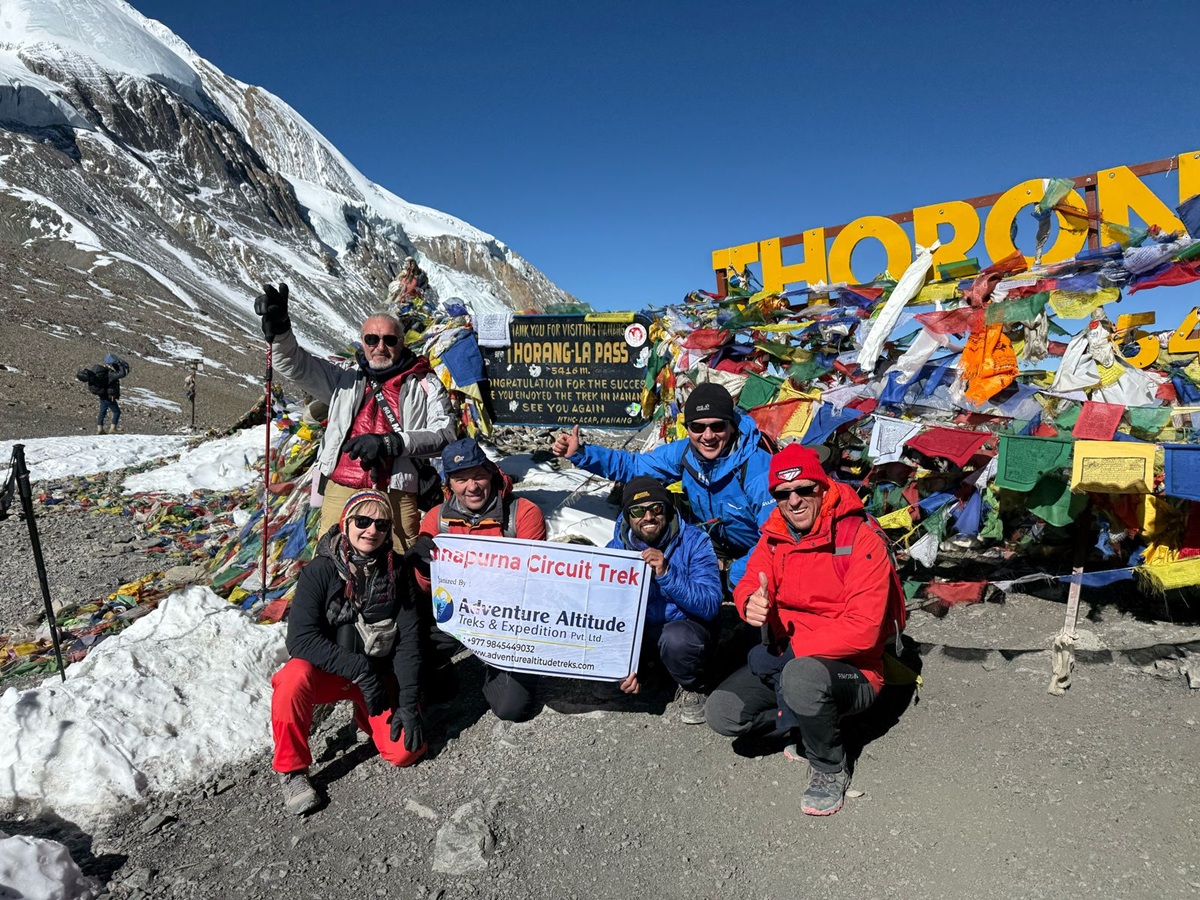
Travelers consider Thorong La Pass crossing at 5416 meters to be the toughest section along the Annapurna Circuit Trek Nepal. Thorong La Pass circuit path opens up close views of Annapurna along with Dhaulagiri mountain range. Visitors start the journey across Thorong La Pass at 5.416 meters in the early morning from Thorong Phedi and High Camp by climbing steep rocky ground under cold ambient conditions with thin air.
The most satisfying feeling of reaching the pass with fluttering prayer flags is incomparable, and the thought keeps one going upwards. This strenuous part of the Annapurna Circuit Tour 13 Days pays big time when one crosses Thorong La Pass at 5,416 meters above sea level for views in all directions of some of the most majestic peaks in the Himalayas.
Coming from the east over the pass, Gangapurna, at 7,455 meters above sea level, stands well above. Beautiful spires of Annapurna III, 7,555 meters and Annapurna IV, 7,525 meters, complement in majesty. Not very far away, the Chulu range climbs up to fill this mountain vista: Chulu West at 6,419 meters and Chulu East at 6,584 meters.
The farthest view stretches from Thorong Peak at 6,144 meters to the rugged face of Khatung Kang at 6,484 meters. To the west is the beautiful snow capped Dhaulagiri leading up to the Dhaulagiri II at 7,751 meters. Continuing the panorama of those peaks, the trek drops down to Muktinath, the descent at times threaded by normal glimpses of barren landscapes defining Mustang.
Annapurna Circuit Trek 13 Days Altitude and Distance
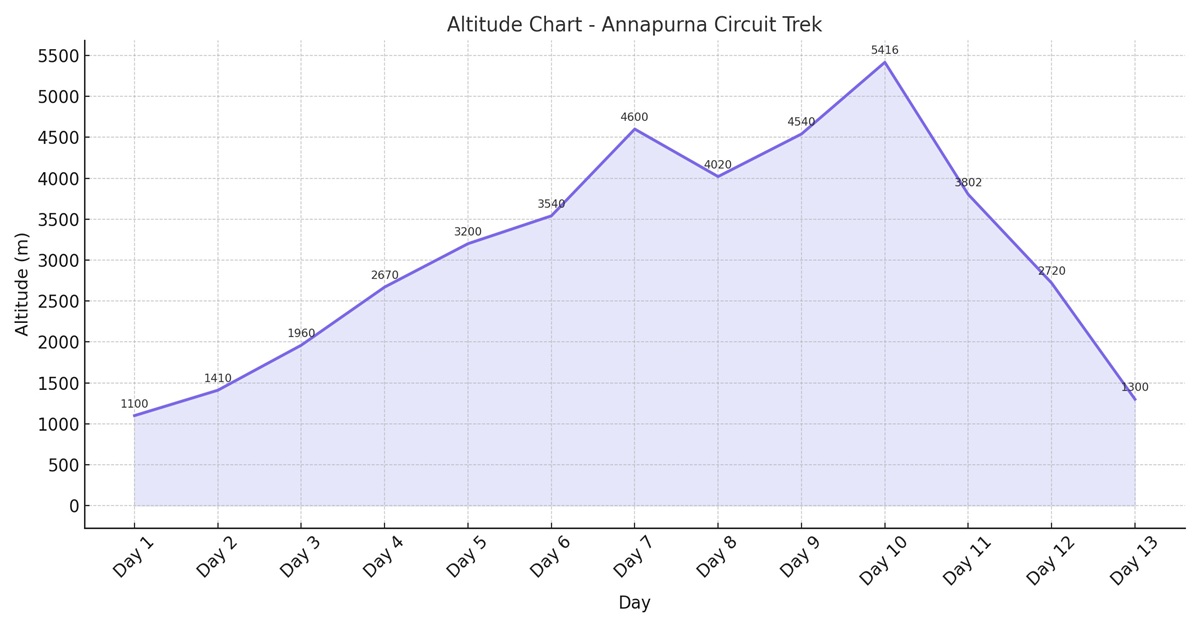
Depending on routes taken, who you travel with and some sidetracks, the 13 Days Annapurna Circuit Guided Trek measures between 160 to 230 kilometers (or between 100 to 145 miles) in length. During 13 days of trekking, trekkers go up and down a significant altitude range. The trek is beautiful and stunning to behold while also being a true test of endurance and acclimatization.
- Start Altitude: Roughly 800m at Besisahar
- Highest Point Altitude: Thorong La Pass at 5,416m
- Finish Altitude: Roughly 1,100m at Jomsom or Pokhara (route taken)
- Total Trek Distance: ~160–230 km over 13 days
- Critical Altitude Points:
- Chame: ~2,670m
- Manang: ~3,540m
- Thorong Phedi: ~4,540m
- Thorong La Pass: 5,416m (highest altitude on the trek)
- Muktinath: ~3,760m (descending from pass)
With Annapurna Circuit Himalayas Trek there is approximately 10–20 km per day walking, and gain in elevation with the majority of work being put into tempo and acclimatization. Ascent progressively allows full acclimatization to thin air and thus this 13-day trek to be challenging but successful. For a shorter distance you can choose Annapurna Circuit 10 Days Trip with us.
Annapurna Circuit Trek in Nepal: What To Expect as a Trekker?
Combining the most beautiful landscape with cultural enrichment and a physical challenge, this is one journey-the Annapurna Circuit of Nepal. The treks are from 160 to 230 kilometres long and take 12 to 21 days through the lush valleys and arid high-altitude deserts across the formidable Thorong La Pass, 5,416 meters, for stunning views of Annapurna and other peaks of the Dhaulagiri Himalayas.
Annapurna Circuit Himalayas 13 Days is the perfect trek for the moderately fit hiker who enjoys long days and has some altitude tolerance. Fantastic to learn of culture from villages, monasteries, and teahouses. But it is not recommended for the faint of heart, nor those that do not have ample time for the journey since good preparation, acclimatization, and physical training should be considered.
The Annapurna Circuit Thorong La Pass 13 Days combines a sense of adventure, diverse sceneries, and complete immersion into the culture. At the same time, for those people who prefer shorter and easier treks or have an altitude phobia, there is a Ghorepani Poon Hill Trek. Give your judgment to your fitness, time, and preference to see whether you should make it to this iconic trek.
Annapurna Circuit Trek 13 Days Map
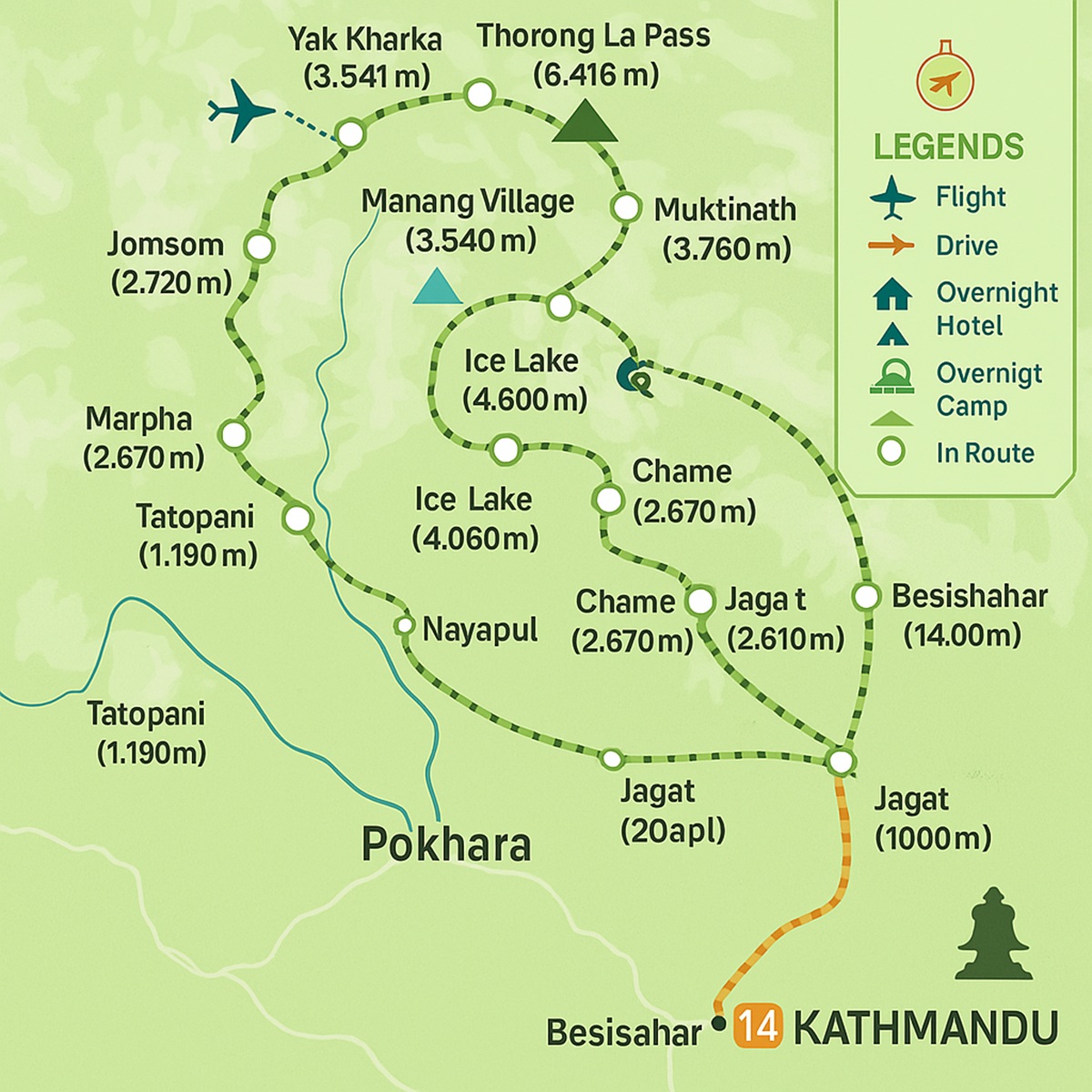
The Annapurna Circuit Trekking With Adventure Altitude Treks Benefits
- Free International Airport Pickup and Drop Facility: to keep the travel hassle-free.
- Company Trek T-shirt and Duffle Bag: to remember the trek anytime.
- Annapurna Circuit Trekking Map: for better navigation. Medical Kits: as per necessity or in emergency cases.
- Private Vehicle Services: The travel becomes comfortable concerning airport pickups/drop-offs.
- First-aid Kit Box with its service regarding Safety and Health in Trek.
- Guide Services: Yes, it will be provided as required by Trekkers in advance.
- Distribution of Gear: The Company will provide down jackets, T-shirts, and caps.
- Emergency Evacuation Arrangements: Trekkers are supposed to bring theirs.
- Health Check-Up: Checking of pulse, oxygen level and heart rate by using oximeters.
- Personal Attention: This will ensure that the trek is safe and enjoyable, hence memorable.
Annapurna Circuit Trek Itinerary 13 days: Is This the Shortest Route Itinerary in 2025 and 2026?
Although many trekkers make this journey through the 13-day itinerary, offering a good all-rounded taste of the diversity in landscapes, culture, and high highlights of the Annapurna Circuit includes Thorong La Pass at 5,416m. But then again, it does not really cut into the list of the shortest since there may be much shorter routes, for example, a 10-day, 7-day, or even 6-day trek.
Most of these Annapurna Circuit Tour Itineraries drive deeper into the circuit, either to Chame or Manang, with the aim of reducing walking days or even skipping some sections. These save time but actually miss out on some richness in culture and scenery along this trek. While the 13-day trek may not be one of the shortest, it covers quite enough experiences, allows ample time for acclimatization, and sees important parts like Pisang, Manang, and Muktinath.
It's really a question of your time, fitness, and priorities. If time is very scarce, shorter routes can be done, but the 13-day itinerary here strikes a good balance between in-depth exploration and duration.
Nepal Annapurna Circuit Trek 13 Days: How TO Be Prepared for the Trek?
- Fitness Training: You’ll want to get your fitness program for the Annapurna Circuit Tour 13 Days started with some aerobic conditioning beforehand to build both fitness and leg strength (remember your legs will be doing most of the work) during the 2-3 months before the trek.
- Acclimatization: Acclimatize without rest days; you want to acclimatize gradually so that you do not get altitude sickness. Drink a lot of water and listen to your body if you are dizzy and/or have a headache.
- Permits Needed: Purchase the Annapurna Conservation Area Permit (ACAP) and the Trekkers' Information Management System (TIMS) card before the trek.
- Smart Packing: Pack smart, which includes packing dry clothes, a rain jacket, fitted hiking boots, and the essential first aid kit; make sure your pack is no more than 12 kg.
- Hydration: To reduce the risk of dehydration while at altitude, drink at least 4 liters of safe water daily.
- Travel Insurance: Ensure your travel insurance for Annapurna Circuit Guided Trek covers trekking at high altitudes, as well as medical treatment and evacuation if needed.
- Employ Local Guides & Porters: Local guides and porters are there to keep you safe, support their local economy, and add to your experiences of local culture.
- Be Prepared for Weather: Appropriate clothing and equipment will prepare you for the sometimes harsh conditions.
- Respect Local Culture: Dress appropriately, learn a few phrases in Nepali, and observe the locals for your respect and to keep things running smoothly.
Altitude Sickness Considerations for the Annapurna Circuit Thorong La Pass Trek
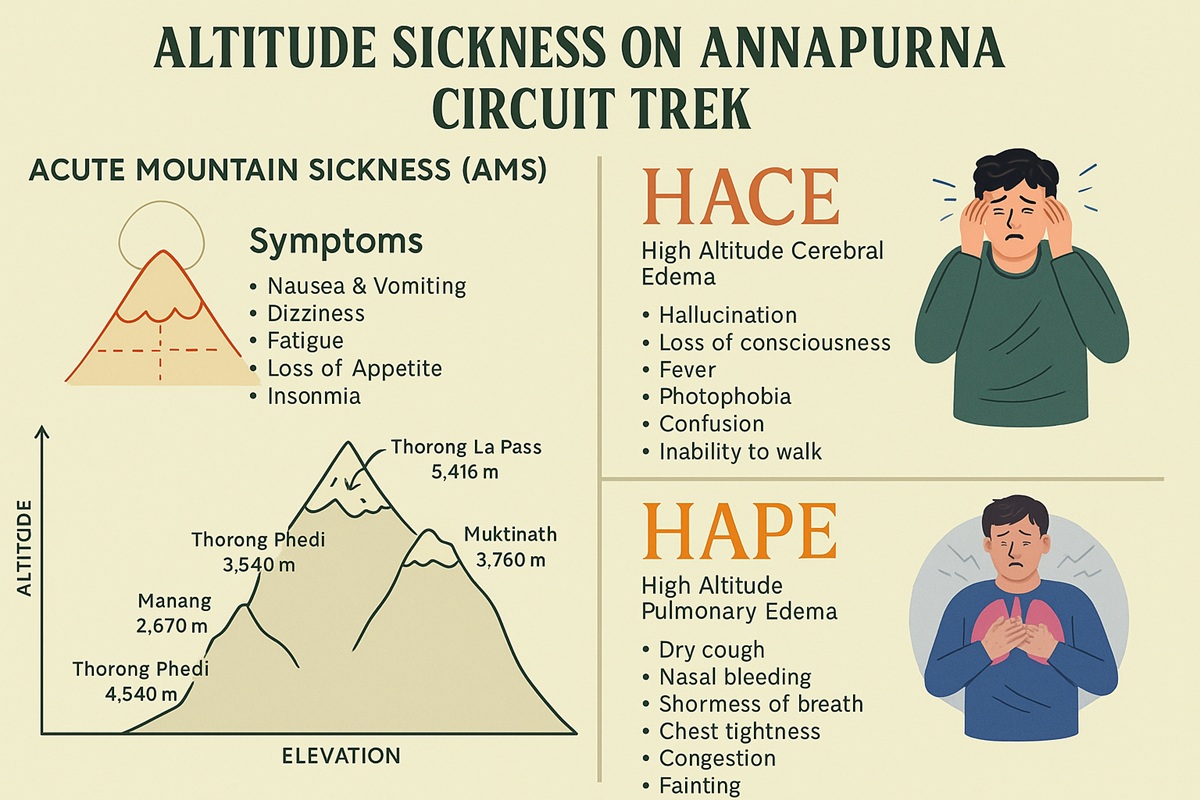
Altitude sickness or Acute Mountain Sickness (AMS) is of concern to trekkers especially when they are trekking towards high altitudes like Thorong La Pass, which stands at 5,416 meters (17,769 feet) sea level in the Trekking The Annapurna Circuit Package. Low pressure and low oxygen level in such altitudes are bound to cause symptoms and complications.
Symptoms of Altitude Sickness
- Mild Symptoms: Headache, dizziness, nausea, loss of appetite, tiredness, and insomnia.
- Severe Symptoms: Pulmonary edema (HAPE) with fluid in the lungs and leading to breathlessness; and cerebral edema (HACE), to the brain and, in the worst cases, causing confusion, disorientation, or coma.
Prevention Tips
- Gradual Ascent: Make ascend based on a Annapurna circuit Trek Itinerary with acclimatization days. Such important major acclimatization points like Manang are crucial.
- Stay Hydrated: Drink lots of water and avoid alcohol or cigarettes.
- Watch For Symptoms: Monitor mainly the early AMS symptoms and rest or tell you guide if they occur.
- Medication: Precautionary drugs should be raised with a physician, possibly using acetazolamide (Diamox).
In the event of worsening symptoms, go to lower elevation immediately to avoid life-threatening complications. There are secrets in preparation and know-how to an uneventful, safe hike.
Annapurna Circuit Trek 13 Days Price 2025, 2026
Group Size | Cost Per Person (USD) | Bookings | Contact Us |
